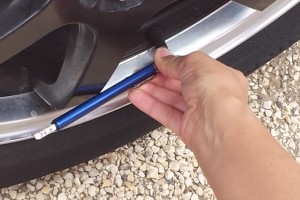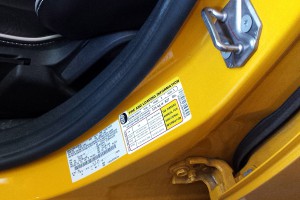Do you know what this dashboard light means? It is your tire pressure monitoring system (TPMS) telling you that one (or more) of your tires is dangerously under inflated.
Under-inflated tires are estimated to cause thousands of car crashes and hundreds of deaths each year, yet 42 percent of drivers still can’t identify the TPMS vehicle dashboard icon, and 1 in 10 surveyed admit to having intentionally ignored a TPMS warning and continued to drive, according to survey results from Schrader International.
While the TPMS is not a requirement in Canada, according to Transport Canada, the U.S. Federal Regulations require that all new light vehicles sold in the U.S. since September 2007 be equipped with a tire pressure monitoring system. Some manufacturers do offer TPMS on vehicles sold in Canada as either standard or optional equipment. To find out whether the TPMS as equipped conforms to U.S. federal standards or the manufacturer’s own standards, please refer to the owner’s manual or contact the dealership.
Regardless of the style of TPMS alert you have in your car, when it lights up, your tires are sending you a very important message: One or more of your tires is significantly underinflated and you or an auto service technician needs to take a closer look as soon as possible. The TPMS warning symbol will illuminate when one or more of the tires is 25 percent under-inflated, at which point the tire is significantly under-inflated and the vehicle is impaired, affecting maneuverability, handling, and braking distance.
Based on their own research and collision investigation programs, Transport Canada has not identified a pattern of motor vehicle collisions caused conclusively by tire failure in Canada. However, the National Highway Traffic Safety Administration (NHTSA) reports tires that are under-inflated by more than 25 percent are three times more likely to be involved in a crash related to tire problems than a vehicle with proper inflation. According to information shared by Schrader International from NHTSA and the U.S. Department of Energy, nearly 200,000 accidents are caused by tire-related issues each year, and 60 highway fatalities and 33,000 injuries are caused by under-inflated tires each year in the United States.


Checking your tire pressure monthly will alert you to any slow leaks that may be present due to a failing valve, small puncture in the tire or poor seal against the wheel. If you notice a consistent slow leak, you may want to stop by an Active Green + Ross Tire Repair Centre to get your tire checked. Battery life on most TPMS valves is about five years, so if your car is equipped with a TPMS system, it may also be time to have your valves replaced.
What’s the good news? According to Schrader, as the drive for increased education progresses, so has the level of safety for U.S. motorists. In fact, the presence of TPMS has resulted in a 55.6 percent reduction in the likelihood that a vehicle would have one or more severely under-inflated tires.
Now you know what the TPMS light is telling you!

